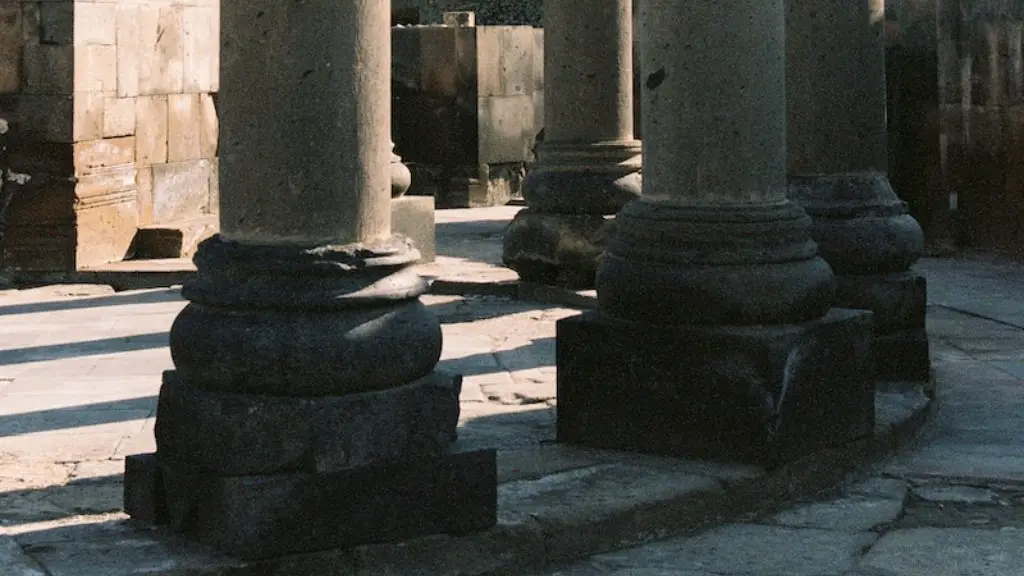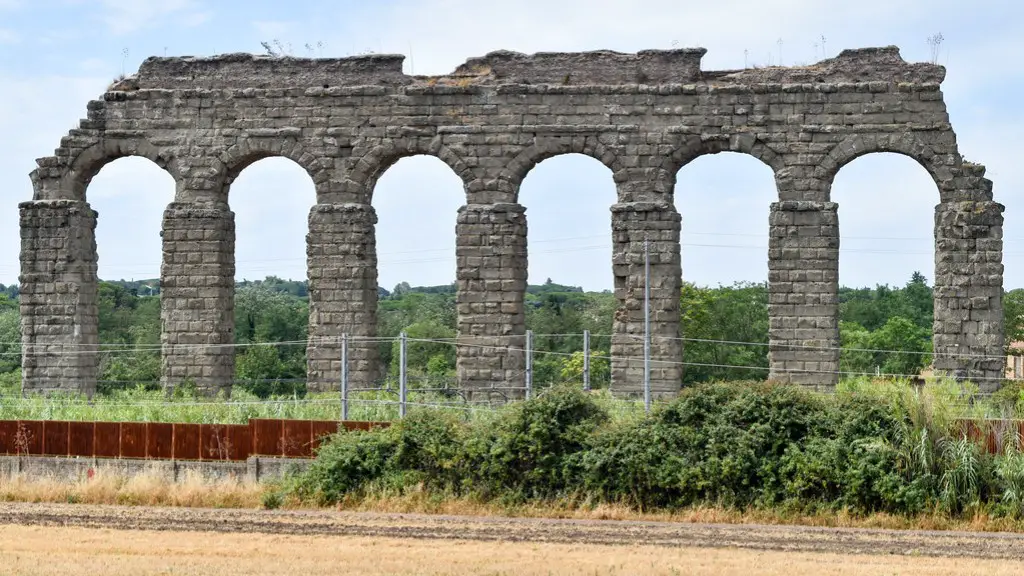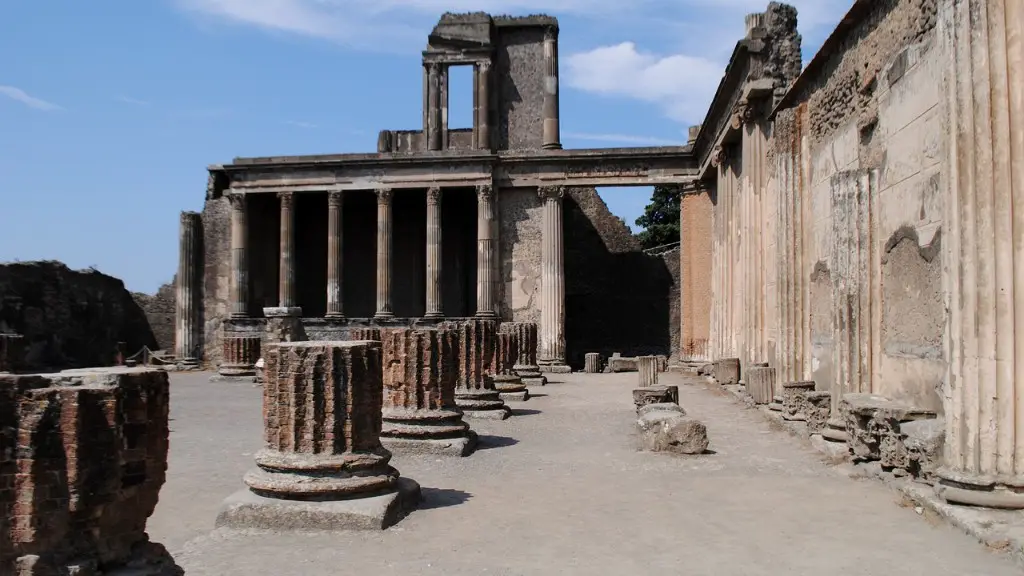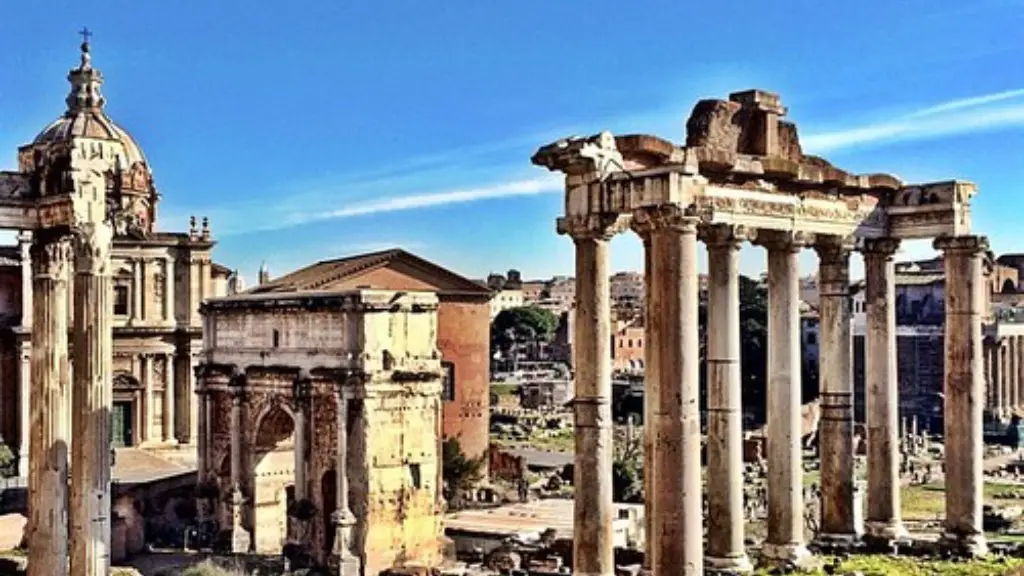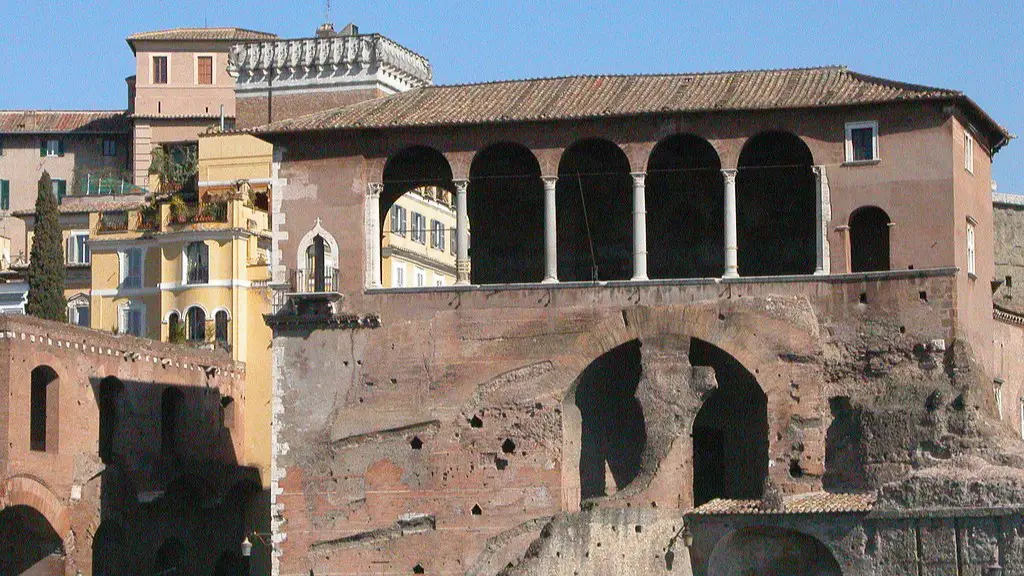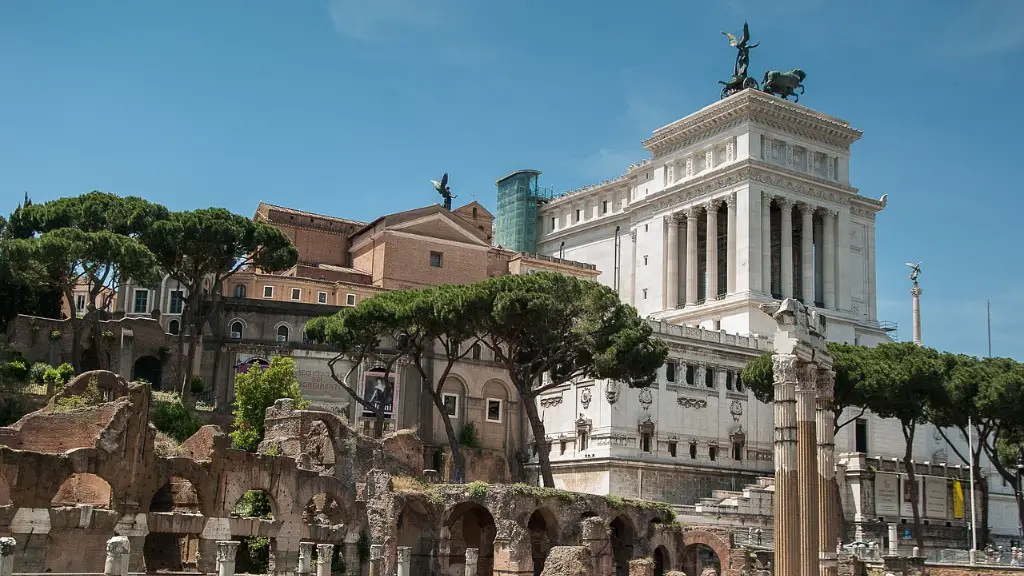Ancient Rome was one of the most powerful and influential societies in human history. Founded in the 8th century BC, it controlled much of Italy and later the Mediterranean world for almost a thousand years before its fall in AD 476. Its legacy as one of the greates civilizations of all time has left an indelible mark on our world today.
Early Rome was a small agricultural village with its origins steeped in myth and legend. Its legendary founders – Romulus and Remus – were said to have been abandoned by their father and raised by a she-wolf. According to the traditional story, Romulus killed Remus in a dispute over where to build their city before establishing Rome in 753 BC. While this colorful tale is cloaked in myth, archaeological evidence and written records indicate that the area around Rome was in fact inhabited by the Latini tribe before then.
Likewise, the period when Rome officially became a city has been open to interpretation. While legend and tradition place the date of Rome’s foundation at 753 BC, some historians believe that Rome’s origins date back even further. Paleoanthropological research, for example, suggests that early humans may have been living in the area for tens of thousands of years, and it is possible that the earliest inhabitants of the area were able to create a thriving agricultural and trading community well before 753 BC.
The archaeological record provides an even more detailed picture of early Rome. Remains from the period suggest that the Romans were a practical people, with a focus on engineering, craftsmanship, and trade. The Etruscans, a mysterious people living in the area at the time, likely left a lasting influence on the Romans’ culture and language. However, the evidence suggests that the Romans had a unique culture of their own that was characterized by a deep connection to the natural world and a strong sense of social responsibility.
From the 8th century BC onwards, Rome saw a rapid expansion of its power, sweeping across much of Italy and later dominating the Mediterranean world. It became an imperial power, with an advanced system of law and government, as well as a highly developed culture and infrastructure. The Romans are credited with a number of achievements, including the improvement of infrastructure through roads, bridges, and aqueducts, and a finely tuned system of taxation and fiscal management. The use of Latin as a standard language for the entire empire further unified Rome’s expansive borders.
Above all, the Romans are remembered for their achievements in engineering, law and government, and for their advanced systems of commerce and trade. Their legacy has left many lasting impacts which can still be felt today, from the influence of Latin on numerous European languages, to the widespread admiration for their engineering feats, and even to the beliefs and customs that many of us still live by.
Influence of Ancient Rome on Modern Political Systems
The Roman Empire’s advanced political system, known as the Roman Republic, provided a number of important and lasting legacies to the modern world. Its tripartite governing structure and emphasis on the rule of law set a foundation on which later forms of government could build. Additionally, the framework of the Republic’s unwritten constitution established a trajectory for democracies and constitutional republics yet to come, inspiring vast and widespread interest in the legacy of Roman government – particularly around the turn of the 19th century.
Central to the Roman Republic’s success was a broad framework of governmental checks and balances, which aimed to ensure that no one individual or faction had the capacity to gain ultimate authority. This concept still resonates today in forms of government around the world, from American democracy to the British parliamentary system. Additionally, the spirited political debates and power struggles between the various senate factions demonstrates the established value of contention in legal/governmental decision-making, which still serves as a cornerstone for many of today’s most prominent western democracies.
In terms of legislation, the Romans established precedents for a number of laws and regulations that are still relevant today. Their civil codes, including the renowned Twelve Tables, demonstrate a clear appreciation for the sustainable regulation of acceptable public behavior and displays a comprehensive understanding of fair and just laws that codify matters such as land rights and financial practice. Similarly, the Roman concept of separation of powers serves as an example for countless modern governments, from France to Australia.
Overall, the legacy of the Roman Republic still serves as an inspiration for countless countries around the world. Its balance of governing factions, written and unwritten works of legislation, respect for civil law and understanding of governance are just some of the elements that assist in providing a sustainable foundation for a wide range of governments today.
Impact of Ancient Rome on Modern Education Systems
The education system of Ancient Rome was largely based on the teachings of great thinkers like Cato, Cicero and Plato. These influential scholars laid down the foundations of learning that would shape the teaching styles of future generations. Through their writings, they established a system of knowledge and narrative that emphasised the importance of classical studies, rhetoric and philosophy. Cicero, in particular emphasised the value of education for the betterment of society as a whole, a sentiment that is reflected in modern education systems today.
The educational system of Ancient Rome was organised into two tiers. The lower tier included basic subjects such as reading, writing, maths, music and philosophy. These subjects were taught by a variiety of teachers, including slaves and professionals. In the upper tier, students could pursue more advanced studies in rhetoric, theology, poetry and law. This curriculum gradually evolved through the centuries, and saw the introduction of fields such as engineering and mathematics in the 2nd century AD
Ancient Rome’s educational system focused heavily on the concept of public speaking, with students trained in rhetoric, logic and literature which they could use to persuade an audience. This remained an important part of the Roman curriculum and saw great success as many of its students went on to become successful lawyers and orators. This understanding of rhetoric and argumentation still serves as a key component of all modern educational systems, stimulating students to think critically and communicate effectively in public speech.
Furthermore, the potential to further one’s education through private tutors, instructors and professional authors was an integral part of Rome’s system of learning. This option today still remains open to anyone, no matter their level of wealth or privilege. While some of Ancient Rome’s educational practices have been abandoned or changed, its legacy remains a strong foundation for the current education system, and its lasting impact can be seen in modern universities and academia today.
Influence of Ancient Rome’s Religion on World Religions
Religion played an essential role in the everyday life of Ancient Rome, influencing the beliefs and customs of its citizens. Though much of the religiosity of the time revolved around the worship of gods, goddesses and other supernatural entities, other religious practices also found their way into the culture. These practices are largely responsible for shaping the religious structures and beliefs of several major world religions today.
The religion of Ancient Rome was largely polytheistic in nature, with the citizens worshipping a variety of gods and goddesses. This pantheon encompassed a range of deities, including Jupiter, the supreme god of the Roman Empire, as well as Venus, Mars, Mercury and other lesser known gods. These gods and goddesses were believed to have different powers, roles and responsibilities. The Romans would often pray to these gods for help in their everyday life, offering goods, goods or libations in exchange for favours or protection.
Additionally, Rome incorporated other belief systems into its religion. Mystery religions, such as the worship of the gods Dionysus, Isis and Mithras, were popular among certain segments of the population and provided ancient Romans with additional outlets for their devotion and worship. These practices, in turn, laid the groundwork for many religions that developed later on, including Christianity and Islam.
Overall, Ancient Rome’s influence on world religions and spirituality remains an undeniable legacy. While many of the gods and goddesses of Ancient Rome have fallen into obscurity, the impact of Rome’s religious practices on the religious landscape of the modern world cannot be understated. Its incorporation of mystery cults and its widespread pantheon of divine entities laid the foundation for numerous religions and religious practices, which still remain influential today.
Influence of Ancient Rome’s Economy on Modern Economics
The economy of Ancient Rome was one of the most advanced of the ancient world and had an immense influence on the subsequent development of the economies in Europe and beyond. Rome was home to a wide variety of industry, from textiles and metalworking to food production and shipping, but the primary source of wealth was the complicated system of taxation. This taxation system was based largely on trade tariffs and indirect taxes, and allowed the Roman government to levy taxes on exported goods as well as pay for services with non-monetary offerings such as grain, wine and oil.
The taxation system of Ancient Rome did much to shape European economics, with principles derived from Roman taxation influencing modern taxation systems. Additionally, the Roman system of finance, one of the most advanced of its time, established the precedent for the modern banking system. Ancient Rome also played a major role in the development of financial instruments such as the bill of exchange, which paved the way for institutions like commercial banks.
The economic stability of Ancient Rome, achieved in no small part by its taxation system, also had a large influence on the development of modern trade and commerce. Rome facilitated a number of important trade networks and fostered economic activity which is today reflected in the international markets and trading blocks of the modern world. Additionally, the concept of currency also has its origins in Ancient Rome, with coins used during this time representing a form of paper currency, albeit less sophisticated than our current system.
Overall, Ancient Rome’s finances and taxation system were far ahead of its contemporaries and had a profound effect on the shape of modern economics. Its taxation system formed the basis for the western world’s current taxation systems and its financial instruments are still in use today. The concept of currency also owes much of its success to Rome, as do regional trade networks and the development of international commerce.
Influence of Ancient Rome’s Architecture on Modern Architecture
The architectures of Rome have had profound influences on our modern day designs. From the grandeur of its engineering and monuments, to the simplicity and elegance of its homes, Ancient Rome’s works of art bridge the gaps of time between their modern counterparts. Today, the influence of Ancient Rome can be seen in many of the world’s most iconic buildings.
Ancient Rome developed into a culture of complex and ornate architecture, utilising marble, stone, gold and bronze to create masterful displays. Its engineering feats included the immense Colosseum and its Grand Aqueduct systems, which connected a sprawling network of cities with water sources. Additionally, the Pantheon of Rome stands out as a shining example of the engineering skill and creativity of its architects, who were able to create a dome structure whose internal engineering still stands tall today. This structure presented something of a turning point in early architecture and engineers ever since.
The influence of Ancient Rome can also be seen in many of the world’s most iconic homes and villas. Roman architecture made use of many classic styles, such as porticos, atriums and courtyards – all of which remain popular in modern design today. Additionally, its use of concave, convex and classical columns have become mainstay elements in building designs, providing a link to the past in the most seemingly ordinary of homes.
In other ways, Roman architecture has had a more subtle influence on our design tastes. The use of mosaic flooring, fine sculptures, and other aesthetic elements can still be seen in modern constructions, paying homage to a culture that valued decorative displays and exquisite designs. Likewise, the longevity of some of its particularly significant pieces, such as The Pantheon, have demonstrated the value of quality engineering and sustainability practices, which have seen implementations in many modern constructions.
In conclusion, the architecture of Ancient Rome has had a lasting impact on our designs today. From landmarks to everyday homes, its influence is still evident in many structures built in its wake. Its engineering feats continue to stand testament to their designers, while its elegant aesthetic touches provide a link to the past in today’s modern world.
